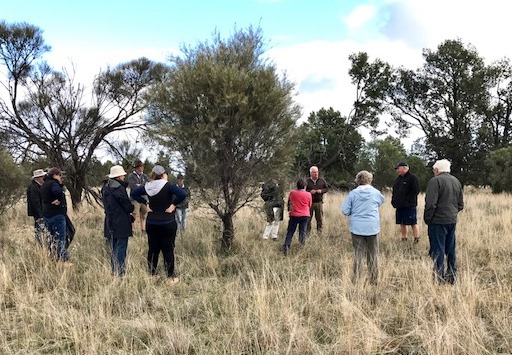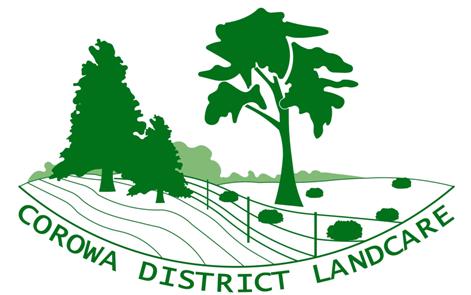Organised by Corowa District Landcare, this workshop at “Cocketgedong Station”, approx. 24 km west of Urana in south west NSW, was led by ANPC Project Manager Martin Driver, and looked at the different types of native pastures and their management for sustained, profitable production. Some of the key species were identified along with their values, attributes and management options, as the walk went through various grassland/woodland communities typical of the wider Urana region. This region has some of the best sheep grazing country in Australia, and soil type, plant diversity, sheep breeding, genetics and rainfall variability are all drivers in the system that affect the productivity of the land. The day was enjoyed by all with much interest expressed in a similar site visit in Spring.
Approximately 25 people attended the workshop, including Landcare volunteers, landowners, LLS officers, stock agents, bank representatives, and consultants. Multiple high quality sites were inspected (a credit to the landowners), including a fenced nature reserve and Travelling Stock Route reserves, containing a wide range of vegetation communities such as species rich Riverine Plains native grasslands; White Cypress Pine (Callitris columellaris) Sandhills and shrub restoration sites; Boree (Acacia pendula)/saltbush shrub/woodland; species rich wetlands/grasslands; Buloke (Allocasuarina luehmannii) woodland; and highly diverse Yellow Box (Eucalyptus melliodora) Grassy Woodland and orchid restoration sites.
Autumn is a good time to look for perennial natives. Native perennial grasses and shrubs are the mainstay of the grazing system under variable rainfall. (Guides for grass flower head identification are available for Plants of Western NSW). Annuals also respond well at this time of year if it rains. Within productive landscapes, native perennial grasses are key assets and native annual grasses are a bonus. With native pasture you need to consider the palatability and nutritional value of what is on offer to stock under different seasonal conditions. Depending on seasonal conditions, sheep will go for various saltbush species first as it is highly palatable. In Martin’s experience, in Autumn they will go for Ruby Saltbush (Enchylaena tomentosa) first, then Thorny saltbush (Rhagodia spinescens) and then Oldman Saltbush (Atriplex nummularia) in conjunction with grasses. Oldman Saltbush is a living hayshed, palatable to sheep and cattle, and can withstand heavy grazing.
Because of the diversity of soils types that form this part of the Riverine plain, there are a range of different vegetation types adapted to the different soil types, which respond differently at various times of the year. Being able to match grazing to the optimum available plant growth, feed availability and target species mix is best done by paddock subdivision and fencing. If possible fence country into vegetation types for ease of management and grazing. This way it is easier to target stock grazing to paddocks based on both best feed on offer and other management targets (eg. negative impacts of Spear Grass seed or to allow Saltbush/Boree regeneration etc). Effective fencing strategies can favour both profitable grazing and conservation objectives as seen on the sites visited. White Cypress Pines are very palatable – so this species is susceptible to grazing as a sapling, particularly in revegetation areas where it requires protection. Sheep will graze Boree which is a relatively easy species to regenerate under grazing management with early rest in good seasons. The key with grazing native pastures is small paddocks, big numbers of stock for a short duration and rest periods to allow seed set. Suckering shrubs can regenerate well if they suffer root disturbance, spreading out from the main shrub or tree, eg. Emubush (Eremophila spp.), Hooked Needlewood (Hakea tephrosperma), Buloke, Butterbush (Pittosporum angustifolium), Native Willow (Acacia salicina), Boree, Sandalwood (Santalum acuminatum), and Rosewood (Alectryon oleifolius).
Joanne Diver, Corowa District Landcare and Martin Driver, ANPC
Further information: Joanne Diver/Judy Kirk at Corowa District Landcare Ph 02 6033 1137 or Email.
This project was coordinated by Corowa District Landcare Inc., with support from Murray Local Land Services through funding from the Australian Government’s National Landcare Programme.


ANPC Project Manager, Martin Driver leading the Native Pasture Management walk at Cocketgedong Station near Urana in south west NSW, May 2017.
(Photos: Judy Kirk, Corowa District Landcare)


